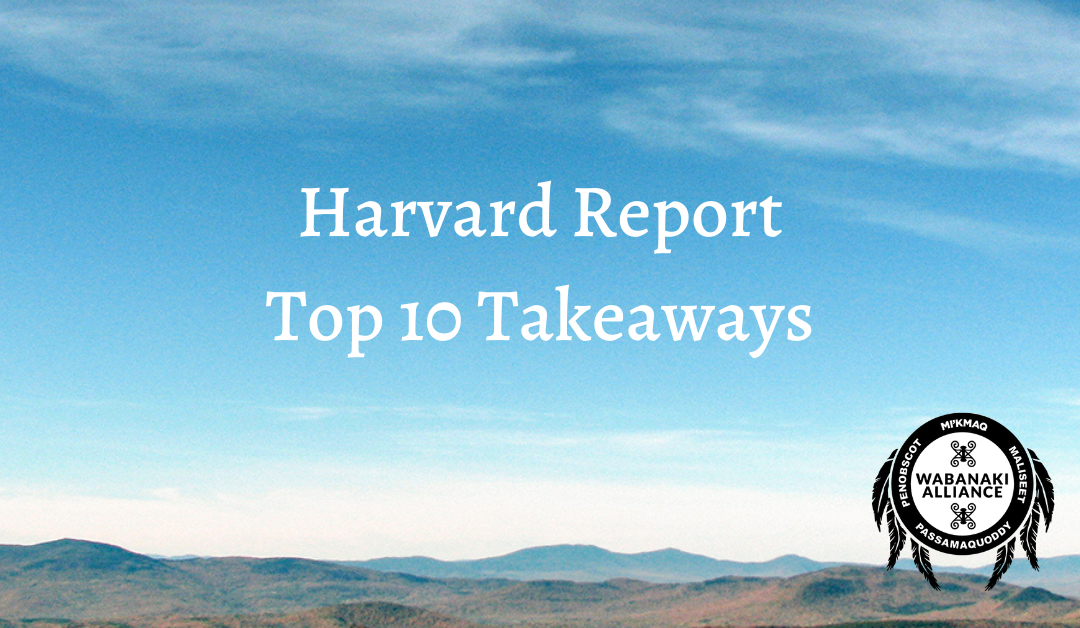In 2022, the Harvard Project on American Indian Economic Development, now the Project on Indigenous Governance and Development at the Harvard Kennedy School, published an insightful report on the economic impact of the 1980 Settlement Acts on the Wabanaki Nations and surrounding communities. Though some of the data points in regards to income, gross domestic product, etc. may shift, this study remains as relevant as ever, and paints a clear and consistent picture of the benefits of tribal self-determination for tribal citizens and all peoples.
We’ve compiled 10 of the most important takeaways from the report. You can read the full version here and watch a presentation here.
1. Because of the restrictive 1980 Settlement Acts, Wabanaki Nations in Maine have been unable to capitalize on the kinds of economic gains other federally recognized tribes in the U.S. have recorded.
2. Outside of Maine, there’s a 30-year economic boom going on in Indian Country. This is happening in gaming and non-gaming reservations. The Wabanaki are excluded from this growth.
3. The gap is not because of Maine’s economy: since 1989, growth in personal income in Maine is 25%. In other states it is 17%. For Wabanaki Nations it is 9%.
4. The Settlement Acts limit Wabanaki self-government. Under the legislation, unless the Wabanaki Nations are explicitly included by Congress, federal Indian laws are blocked in Maine if they affect or preempt Maine’s jurisdiction. The “affects or preempts” language gives Maine a low-cost veto over Wabanaki self-rule at any time and because the Settlement Act doesn’t define what it means for a federal law benefiting Indians to “affect” or “preempt” Maine state law, the costly burden of proving otherwise falls on the Wabanaki tribes.
5. The Settlement Act has been used to exclude the Wabanaki from more than 150 federal laws and policies since October 1980 concerning safe drinking water, housing, health care, managing natural disasters, and many others.
6. The exclusion also harms other Mainers. For example, other federally recognized tribes can apply for disaster relief funds from the federal government. The funding benefits the tribes and their non-tribal neighbors, bringing more disaster relief to the state overall.
7. Closing the gap in Maine through self-government will benefit the Wabanaki and their neighbors. Self-government for the tribes is estimated to raise an additional $330 million a year in Maine’s Gross Domestic Product and $39 million a year in state and local tax revenue, while also creating more than 2,700 jobs – 85% of which would be gained by the tribes’ neighbors in rural Maine.
8. Self-government improves government accountability, because decision makers are local. They are faster and more responsive to the needs of tribal citizens and the surrounding communities, resulting in improved health care and education success for tribal citizens.
9. There’s nowhere to go but up. No one is made better off by keeping their neighbors poor and experience outside of Maine says expanded tribal self-government leads to more, and more productive, tribal-state cooperation. The status quo means lost economic opportunity for the Wabanaki and their rural neighbors and continued litigation, recrimination, and mistrust.
10. The overall experience outside of Maine has been that increasingly capable tribal governments improve state-tribal relations by enabling both parties to come to the table with mature capacities to cooperate. Without enactment of LD 2007, Maine will be left with a status quo in which all sides leave economic opportunities on the table and ongoing cycles of intergovernmental conflict, litigation, recrimination, and mistrust continue.





